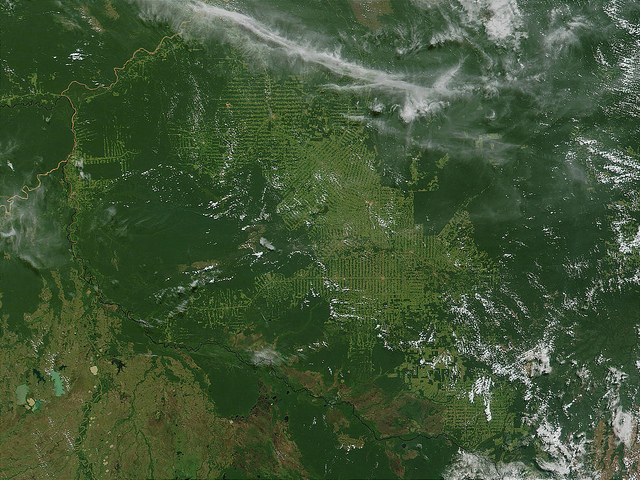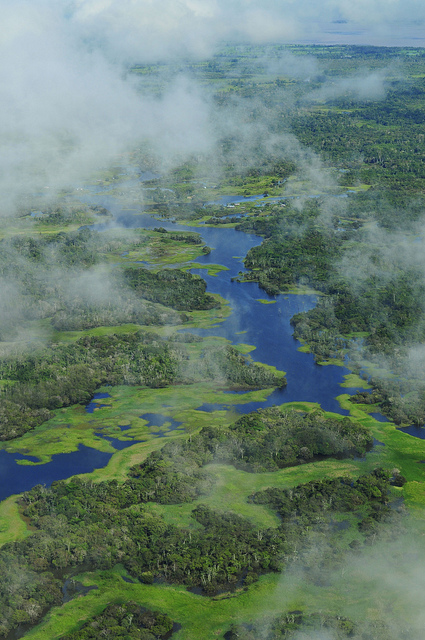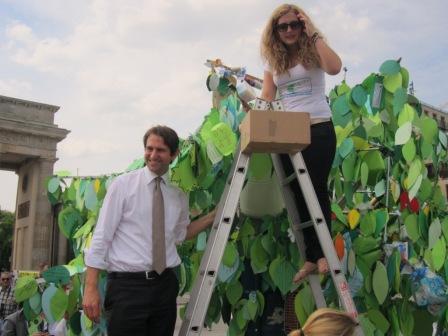Quitting fossil fuel could be the hardest plan ever
Quitting to smoke cigarettes is hard. At least for a few days you won’t be able to think about something else then the lovely features of a cigarette: it makes you calm, it helps you start a conversation (“Got a lighter for me?”), it’s perfect with a good coffee. Wrong. After a while you will enjoy your coffee as well as before, you recognize that you are able to talk to strangers without asking for fire or you will be able to sit and relax without a smoke.
A new study from the George Washington University took that experience and compared it to our use of fossil fuel. And it says that it’s basically the same.
How do you consume fossil fuel? Think about it for a moment. Do you see any analogy? Well, yes, there might be comprehensible parallels. But it’s more like a metaphor.
Of course, we will not be able to stop using fossil fuel, or carbon compounds, right away. They are almost everywhere around us. We use them in our daily routines, sometimes without being aware of it. Think about the plastic in your toothbrushes or salat bowles or about the fuel in your car. It’s bad and you know it, but there’s no way out, right? It’s the same about smokers. Besides that smoking has a lot of socio-cultural reasons, most smokers know about the dangers of cigarettes. But a lot of them won’t stop anyway. They are “unhappy addicts”, both of them, smokers and carbon compound users. And if it’s hard to stop smoking, it’s harder to stop using fossil fuels.
But when smokers have the opportunity to just quit and feel sick for a short period of time, or look for a “healthier alternative,” like … bubble gum or cookies, the alternatives of fussil fuel junkie are still rare or harder to achieve.
The society is addicted entirely to energy, the services and convenience that fossil fuels provide. But maybe it’s possible to learn something from the way to deal with other bad habits. If we really want it, we can make it? Tell us your opinion!
Waste disposal morphs to animals’ habitat
Once upon a time it was called illegal waste disposal when people threw old tires, blocks of concrete or other not-anymore-used things into the sea. Today, something like this is declared as measure to save coastlines and increase biodiversity.
“Bioblocks” for example – not at all green, as the name might suggest – are big blocks of grey concrete with holes and channels. This new idea of an Irish team is to protect the Irish coastline, but can well be adopted for other places.
From grey to green
The blocks shall prevent erosion as well as weaken smashing waves and at the same time provide habitat to colonizing sea animals, thereby even increasing the shore’s biodiversity.
Another “invention”: Columns of concrete to plant corals on it. After a tsunami, they where almost all gone. Now humans try to bring them back – coral by coral set upon that concrete columns. Sounds weird? Have a look youself:
What do you think: Great idea or won’t work anyway? Do you have any experiences with such measures around your place?
The climate-volunteers of Indonesia
What do you expect when you are visiting a climate protection project, supported by the United Nations World Tourism Organization (UNWTO)? I was pretty sure to find some supporting staff members who are well payed to do their green jobs. But what I found at Pangandaran, a bathing resort at the Southern coast of Java, was a lot more – a large number of Indonesian people are taking action themselves, as volunteers in the project. The motivations may be different, but all of them agree that something has to be done, sooner, not later.
Apip Winayadi is an activist for Sundanese Culture, he sees his task hidden in history:
Apip Winayadi, Environmental Activist from DW_Global Ideas on Vimeo.
When a terrible Tsunami rolled over the region in 2006, leaving more than 600 people dead, almost everything was destroyed. Mangroves had been ripped of the ground, coral reefs where smashed by the power of the wave. But also the livelihood of the whole population layed down, without any infrastructure or hotels tourism collapsed completely. But the catastrophe caused a new dawn with a lot of opportunities for the future, Encih Sarsih says. She is the principal of an elementary school here:
Encih Sarsih, Elementary School Principal from DW_Global Ideas on Vimeo.
The STREAM Project (Sustainable Tourism through Energy Efficiency with Adaptation and Mitigation Measures) focuses mainly on the support of renewable energies (in hotels or restaurants) and a rebuilding of the destroyed environment (reforesting mangroves or building up coral reefs). This is where most of the volunteers are involved, like Bapak Iwa, a fisherman and today also an environmental activist:
Bapak Iwa, Fisherman and Environmental Activist from DW_Global Ideas on Vimeo.
Author: Kerstin Schweizer /ke
Deforestation means less hydropower

Satellite image of the Rondonia region of Brazil showing the massive deforestation underway in the south-central Amazon Basin. (Photo: CC BY 2.0: Banco de Imágenes Geológicas)
The Amazon deforestation rate rocketed to 88 percent during the last year: From August 2012 to April 2013, 606 squaremiles of forest were cut down compared with 322 square miles within the previous year, claimed as a record low.
That’s the conclusion of researchers from the National Institute of Space Research, who frequently monitor forest coverage with help of satellite images. Until recently, they could announce a slowing of deforestation. But, now it seems that the fate of one of the world’s biodiversity hotspots has changed.

Trees take more water from the ground than crops do – and release more water vapour into the atmosphere. There, it turns to rain and finally feeds hydropower plants (Photo: CC BY SA 2.0: International Center for Tropical Agriculture)
The report comes on the heels of another study: scientists recently drew a connection between deforestation and energy supply. They looked at the Xingu river region in Brazil and found that cutting trees also cuts rainfall, resulting in reduced hydropower generation. That could lead to the country’s biggest dam project, Belo Monte, delivering a third less energy.
The link between deforestation and energy supply is often ignored, according to the study. “Feasibility studies of hydropower plants typically ignore the effect of future deforestation or assume that deforestation will have a positive effect on river discharge,” it says.
Rainfall does not depend on regional forest cover in the Amazon region alone. Major tropical forested regions in Central Africa and Southeast Asia also play a major role. “This dependence could affect hydropower expansion plans of a large number of developing nations in these regions “, the study concludes.
The tricky job of hammering out a climate wishlist
 The first World Youth Sustainability concluded in Berlin recently. It brought together over 150 young people from 31 countries who met policymakers and experts to talk about how their dream of a more sustainable, equitable world could be realized. Two young participants, Anne-Sophie Risse and Teresa Thalmaier, describe their experiences at the tightly-packed summit.
The first World Youth Sustainability concluded in Berlin recently. It brought together over 150 young people from 31 countries who met policymakers and experts to talk about how their dream of a more sustainable, equitable world could be realized. Two young participants, Anne-Sophie Risse and Teresa Thalmaier, describe their experiences at the tightly-packed summit.
Anne-Sophie Risse, youthinkgreen-Team Osnabrück:
Friday, May 17 – Day seven of our first World Youth Sustainability Summit. Off to an early start – my alarm rings at 6 a.m. It’s not so unusual really since I get up at that hour anyway during a normal school week. But yesterday was a long day. We spent the whole day at the Pariser Platz in central Berlin for our Tree of Hope project. It’s made of trash and has pages bearing the wishes, demands, hopes and requests from us and from other people addressed to lawmakers, governments and people around the world.
Now, early Friday morning, it’s our job to hand over the Tree of Hope to German Environment Minister Peter Altmaier. We – that is 160 young people from 31 countries – arrive at the ministry at 8 a.m. We’d come together in Berlin to draft a document expressing what we want to policymakers, business and society. Our meeting with Altmaier lasts just 15 minutes.
 In order to get a solid understanding of some of the issues that made it into the document, we’ve been listening to daily talks by various experts on climate change and other topics. Today, it’s the turn of renowned climate researcher Hans Joachim Schellnhuber. We head to the Potsdam Institute for Climate Impact Research to hear him speak. He’s very competent and understanding and begins his talk by saying “I’ll wake you up when something important comes up!” In addition to several interesting facts on climate change, I take away this impression from the talk – if there’s an acute, common problem then even nations that are sworn enemies can manage to work together.
In order to get a solid understanding of some of the issues that made it into the document, we’ve been listening to daily talks by various experts on climate change and other topics. Today, it’s the turn of renowned climate researcher Hans Joachim Schellnhuber. We head to the Potsdam Institute for Climate Impact Research to hear him speak. He’s very competent and understanding and begins his talk by saying “I’ll wake you up when something important comes up!” In addition to several interesting facts on climate change, I take away this impression from the talk – if there’s an acute, common problem then even nations that are sworn enemies can manage to work together.
I wonder if things have to go that far. With that thought, we head to the next workshop “Climate change – an intergenerational problem.” Carl-Friedrich Schleußner is the expert in this case and says that people need to live in such a way so that life for successive generations is at least just as good. It’s a topic you can discuss forever. So that the day doesn’t end on too theoretical a note, we’re shown videos by the “ClimateMediaFactory.org” – the world as a user of a network dubbed “Earthbook.” The videos were really well done.
Teresa Thalmaier, youthinkgreen-Team Windhoek:
After absorbing so many new impressions, faces, fascinating lectures and different cultures, we headed to the Konrad Adenauer Foundation.
“If you thought the last few days were grueling, then you’d better get prepared for something really tough today. But that’s what you’ll take home with you, something you can be proud of.” That’s how Helmut Spiering, the project founder of youthinkgreen, welcomed us.
Another two long hours to go before lunch. Initially, we sat in groups of maximum ten young people and racked our brains – what do we actually want? What needs to change? How can we shape our world in a more sustainable manner? How can you achieve that aim?
It sounds easier than it is. How do you formulate things that are politically correct and still compelling? But we weren’t the only ones struggling with the problem. After another discussion in a smaller circle, further groups were created. Now four larger with 40 members each worked on their wish lists. Exhausted, we dragged ourselves off to lunch to recharge our batteries. We all really needed it!
But the tough part was still to come. We were asked to discuss the four wish lists from all the groups and to combine then. We – 160 young people from 31 countries – sat excitedly in a large conference room. There were so many different cultures and languages represented. But all that wasn’t meant to hinder us.
The most difficult part often was formulating the document. Often, our statements weren’t concrete enough, at times superfluous – though there were really good ideas behind them. We gained a deep insight into how a parliament works, how politics is done on an international stage. At the end, we had our final document. It’s unbelievable what we achieved in the last weeks and I’m happy to be a part of the youthinkgreen family!









Feedback